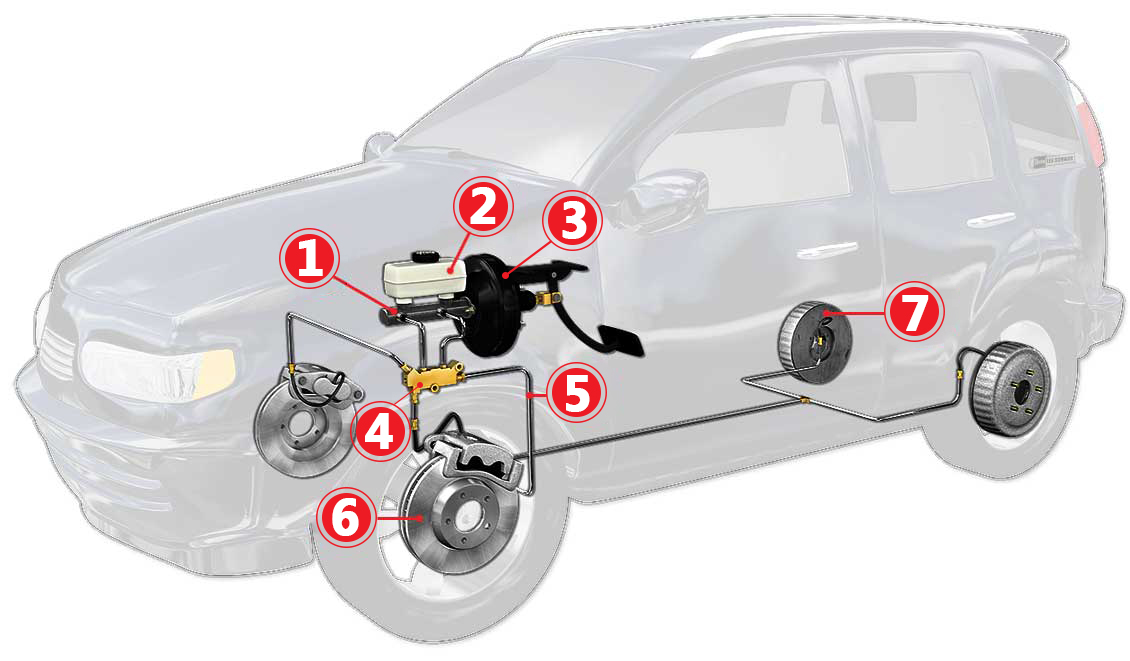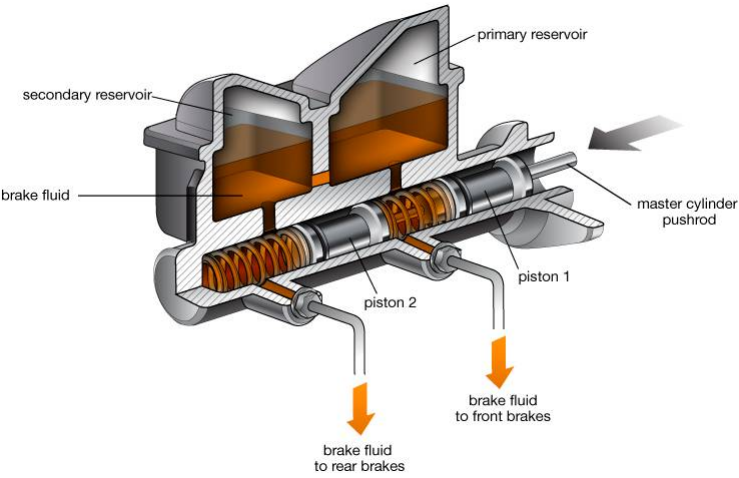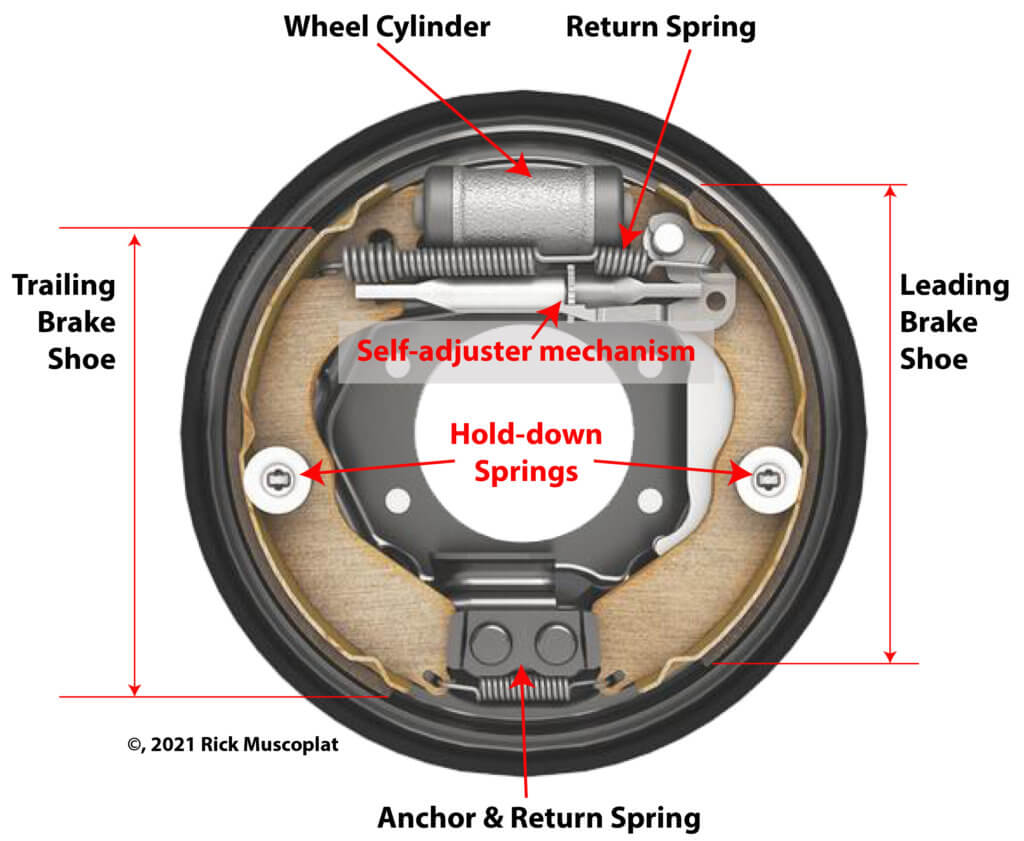How does your brake system work
Here is a simple brake system:

1. Master Cylinder: include the piston assy with the brake fluid
2. Brake Reservoir: the brake fluid inside, which is DOT3, DOT5 or else
3. Brake Booster:single diaphragm or dual diaphragm brake vacuum booster / hydraulic brake booster (brake hydroboost) for heavy duty vehicles
4. Brake Proportioning Valve / Adjustable Brake Proportioning Valve
5. Brake Hoses: braided or rubber stainless steel brake line
6. Disc Brake Assy: contain brake disc rotor, brake caliper with the brake pads inside
7. Drum Brake Assembly: consist of brake shoes, brake wheel cylinder, and so on.
How does the brake master cylinder work?
The brake master cylinder converts the force you apply to the brake pedal into hydraulic pressure. When you press the brake pedal, it pushes a piston in the master cylinder, which forces brake fluid through the brake lines and into the brake calipers or wheel cylinders. This creates pressure that applies the brakes and slows down the wheels. If the brake master cylinder fails, you will have no stopping power, so it's important to keep it well-maintained.

What is the role of the brake proportioning valve?
The brake proportioning valve helps to balance the braking force between the front and rear wheels. It does this by reducing the amount of pressure that is sent to the rear brakes, which tend to lock up more easily than the front brakes. This ensures that the vehicle stops in a straight line and doesn't skid. The brake proportioning valve is usually located near the brake master cylinder and can be adjusted if needed.
What is the function of the brake wheel cylinder?
The brake wheel cylinder is found on drum brakes and is responsible for applying force to the brake shoes, which then press against the drum and slow down the wheel. The wheel cylinder contains pistons that push the brake shoes outwards when hydraulic pressure is applied. Over time, the wheel cylinder can become worn or leaky, leading to reduced braking performance or a spongy brake pedal. It's important to have your wheel cylinders inspected regularly.

Post time: Mar-23-2023

